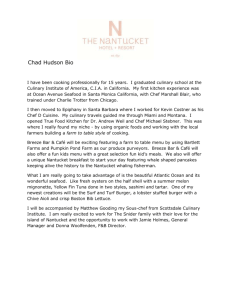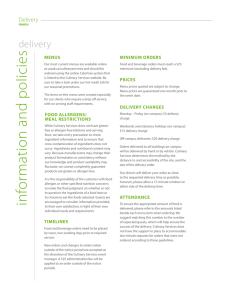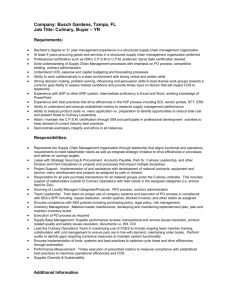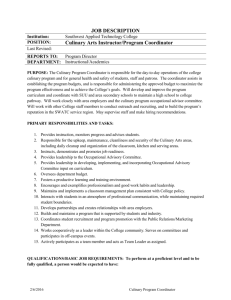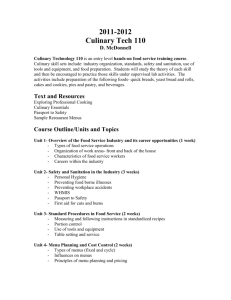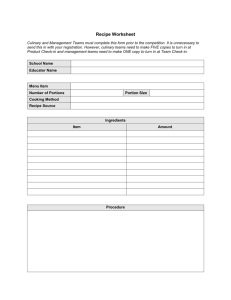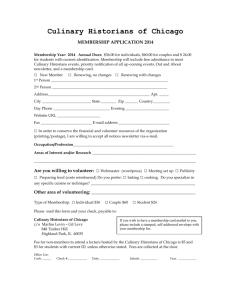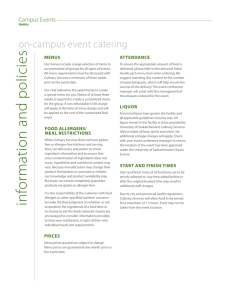Learning Targets
advertisement
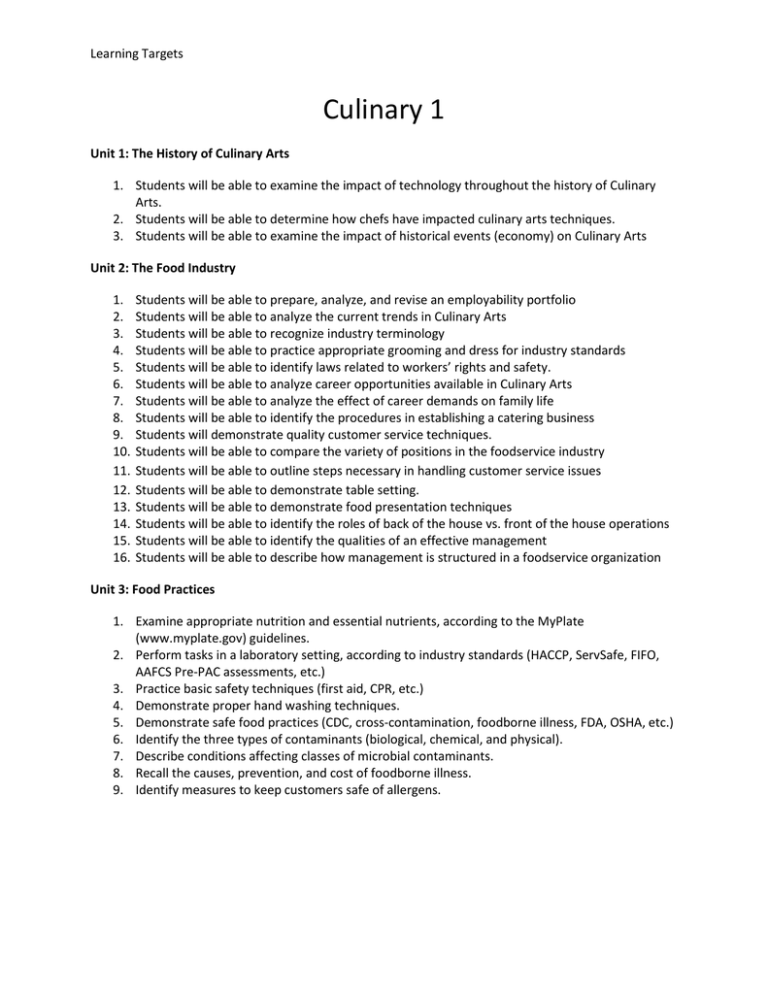
Learning Targets Culinary 1 Unit 1: The History of Culinary Arts 1. Students will be able to examine the impact of technology throughout the history of Culinary Arts. 2. Students will be able to determine how chefs have impacted culinary arts techniques. 3. Students will be able to examine the impact of historical events (economy) on Culinary Arts Unit 2: The Food Industry 1. 2. 3. 4. 5. 6. 7. 8. 9. 10. 11. 12. 13. 14. 15. 16. Students will be able to prepare, analyze, and revise an employability portfolio Students will be able to analyze the current trends in Culinary Arts Students will be able to recognize industry terminology Students will be able to practice appropriate grooming and dress for industry standards Students will be able to identify laws related to workers’ rights and safety. Students will be able to analyze career opportunities available in Culinary Arts Students will be able to analyze the effect of career demands on family life Students will be able to identify the procedures in establishing a catering business Students will demonstrate quality customer service techniques. Students will be able to compare the variety of positions in the foodservice industry Students will be able to outline steps necessary in handling customer service issues Students will be able to demonstrate table setting. Students will be able to demonstrate food presentation techniques Students will be able to identify the roles of back of the house vs. front of the house operations Students will be able to identify the qualities of an effective management Students will be able to describe how management is structured in a foodservice organization Unit 3: Food Practices 1. Examine appropriate nutrition and essential nutrients, according to the MyPlate (www.myplate.gov) guidelines. 2. Perform tasks in a laboratory setting, according to industry standards (HACCP, ServSafe, FIFO, AAFCS Pre-PAC assessments, etc.) 3. Practice basic safety techniques (first aid, CPR, etc.) 4. Demonstrate proper hand washing techniques. 5. Demonstrate safe food practices (CDC, cross-contamination, foodborne illness, FDA, OSHA, etc.) 6. Identify the three types of contaminants (biological, chemical, and physical). 7. Describe conditions affecting classes of microbial contaminants. 8. Recall the causes, prevention, and cost of foodborne illness. 9. Identify measures to keep customers safe of allergens. Learning Targets Unit 4: The Professional Kitchen 1. 2. 3. 4. 5. 6. 7. 8. 9. 10. 11. 12. 13. 14. 15. 16. Model various work stations and work sections. Utilize types of cooking lines. Explain the role of mise en place (meez ahn plahs). Identify the role of the menu. Summarize the factors that influence a menu. Describe the types of menus used by various foodservice establishments. Utilize computer based menu systems to create menu layouts and designs. Identify the parts of a knife. Select appropriate knives for specific tasks. Perform basic cutting techniques. Describe the importance of knife safety and sanitation guidelines and storage. Practice sanitary and cleaning procedures for smallwares and industry equipment, tools, and supplies. Select smallwares for a specific task. Select cookware based on its heat transfer rating and specific use. Describe the parts of a standardized recipe. Prepare a standardized recipe. Unit 5: Culinary Applications 1. 2. 3. 4. 5. 6. 7. 8. 9. 10. 11. 12. 13. 14. 15. Demonstrate a variety of cooking methods (dry, moist, etc.). Describe the characteristics of the basic types of stocks, sauces, and gravies. Explain how to prepare stocks, sauces, and gravies. Prepare various stocks, sauces, and gravies. Prepare, store, and handle various meats, poultry, and seafood. Recognize the quality grades, classes, and market forms of meat, poultry, and seafood. Label the internal structure and composition of meat, poultry, and seafood. Compare and contrast the proper way to purchase meat, poultry, and seafood. Apply the fundamentals of baking to a variety of products. Prepare a variety of gourmet foods, including international cuisine. Prepare fruits, vegetables, pasta, and breakfast foods. Prepare canapés, appetizers, hor d’oeuvres, and garde manger. Prepare a variety of beverages (hot/cold) for quantity for cooking or special events. Compare and contrast seasonings and flavorings. Apply principles of food preparation to produce a variety of food products and beverages for quantity for special events. 16. Examine the applicability of convenience food items.
